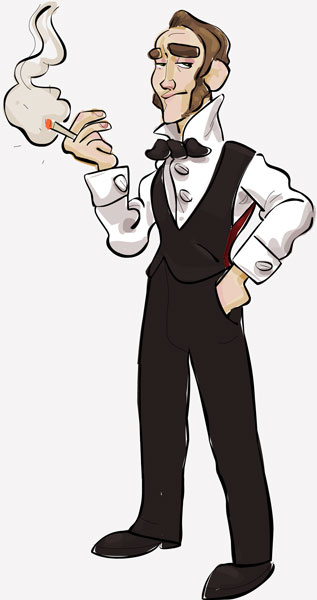

Day of the Jekyll
The makeup treatment of Frederic March’s Mr. Hyde, a tuxedoed man-ape with an unrelenting sharp-toothed smile, is without a doubt the gold standard for film versions of Dr. Jekyll and Mr. Hyde. In the Spencer Tracy version, released a few years later, they tried something different.
First of all, I thought, ugh, Spencer Tracy. A great actor, sure, but one whose rounded block head seemed too blunt for the subtle scientific thought of a Dr. Jekyll. And his Mr. Hyde looks too similar to his Jekyll. There seems to be very little makeup applied at all. Sure, his skin looks like leather, his hair is blackened and tousled a bit, his smile more manic, but there is very little difference between the two. It seems obvious that Jekyll is Hyde and Hyde Jekyll. Why can’t any of the other actors tell them apart?! But, in it’s way, this decision was brilliant.
Why should evil inhabit two wholly different bodies? Why would an external change factor into a complete abandonment of all scruple? Evil exists in diverse forms; some hairy and knuckle dragging, others a little more well-kempt. And what could be more horrifying than an elegant, well-heeled version of evil, an evil that has easy access to his victims because of social standing? Maybe this is what the filmmakers were striving for.
It seems that the popular mythology of the story has the Dr. Jekyll half as the victim and the Mr. Hyde half as the blackheart. It’s as though Jekyll should be pitied in some way. Isn’t Dr. Jekyll the greater villain (or, at the very least, an accomplice) for his desire to pursue such a dark course in awakening his inner Hyde? He wants to awaken that aspect of himself and wants to revel in defilement and mayhem.
In the end Jekyll can’t escape. He never could. He’s just as guilty as Hyde. His was the thought and Hyde’s was the deed.
Tuesday, October 2, 2007





